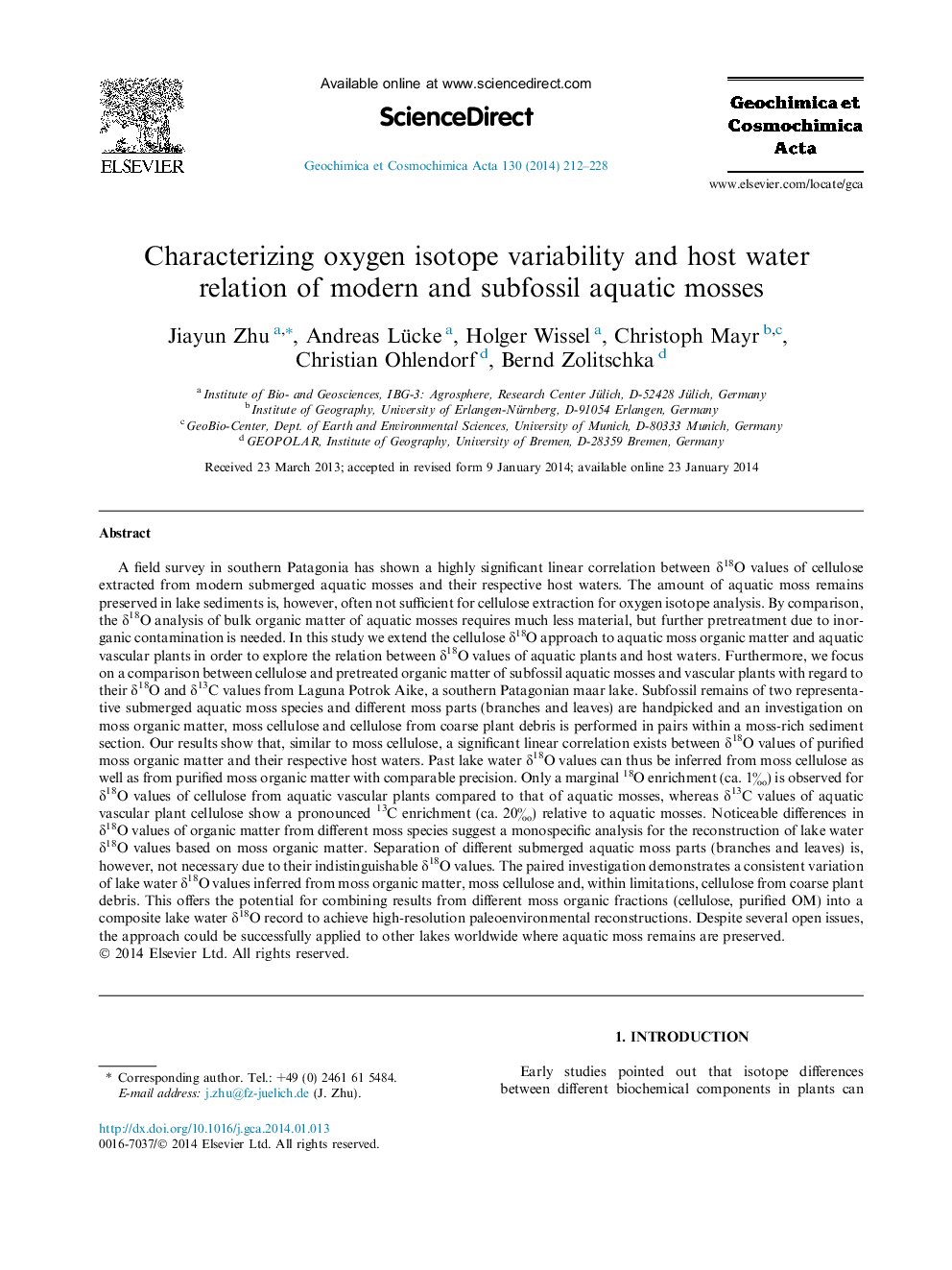| کد مقاله | کد نشریه | سال انتشار | مقاله انگلیسی | نسخه تمام متن |
|---|---|---|---|---|
| 4702171 | 1638027 | 2014 | 17 صفحه PDF | دانلود رایگان |
A field survey in southern Patagonia has shown a highly significant linear correlation between δ18O values of cellulose extracted from modern submerged aquatic mosses and their respective host waters. The amount of aquatic moss remains preserved in lake sediments is, however, often not sufficient for cellulose extraction for oxygen isotope analysis. By comparison, the δ18O analysis of bulk organic matter of aquatic mosses requires much less material, but further pretreatment due to inorganic contamination is needed. In this study we extend the cellulose δ18O approach to aquatic moss organic matter and aquatic vascular plants in order to explore the relation between δ18O values of aquatic plants and host waters. Furthermore, we focus on a comparison between cellulose and pretreated organic matter of subfossil aquatic mosses and vascular plants with regard to their δ18O and δ13C values from Laguna Potrok Aike, a southern Patagonian maar lake. Subfossil remains of two representative submerged aquatic moss species and different moss parts (branches and leaves) are handpicked and an investigation on moss organic matter, moss cellulose and cellulose from coarse plant debris is performed in pairs within a moss-rich sediment section. Our results show that, similar to moss cellulose, a significant linear correlation exists between δ18O values of purified moss organic matter and their respective host waters. Past lake water δ18O values can thus be inferred from moss cellulose as well as from purified moss organic matter with comparable precision. Only a marginal 18O enrichment (ca. 1‰) is observed for δ18O values of cellulose from aquatic vascular plants compared to that of aquatic mosses, whereas δ13C values of aquatic vascular plant cellulose show a pronounced 13C enrichment (ca. 20‰) relative to aquatic mosses. Noticeable differences in δ18O values of organic matter from different moss species suggest a monospecific analysis for the reconstruction of lake water δ18O values based on moss organic matter. Separation of different submerged aquatic moss parts (branches and leaves) is, however, not necessary due to their indistinguishable δ18O values. The paired investigation demonstrates a consistent variation of lake water δ18O values inferred from moss organic matter, moss cellulose and, within limitations, cellulose from coarse plant debris. This offers the potential for combining results from different moss organic fractions (cellulose, purified OM) into a composite lake water δ18O record to achieve high-resolution paleoenvironmental reconstructions. Despite several open issues, the approach could be successfully applied to other lakes worldwide where aquatic moss remains are preserved.
Journal: Geochimica et Cosmochimica Acta - Volume 130, 1 April 2014, Pages 212–228
